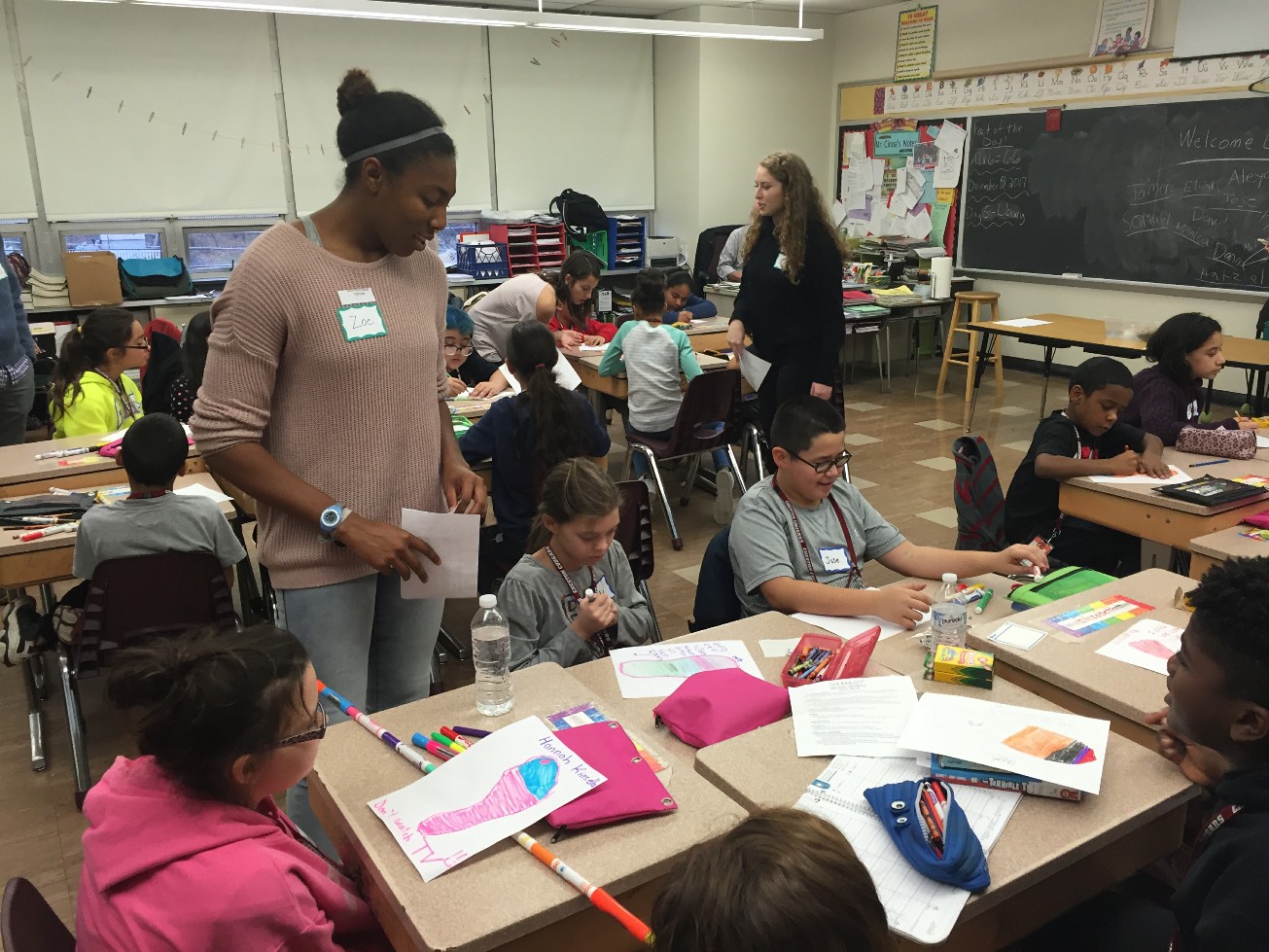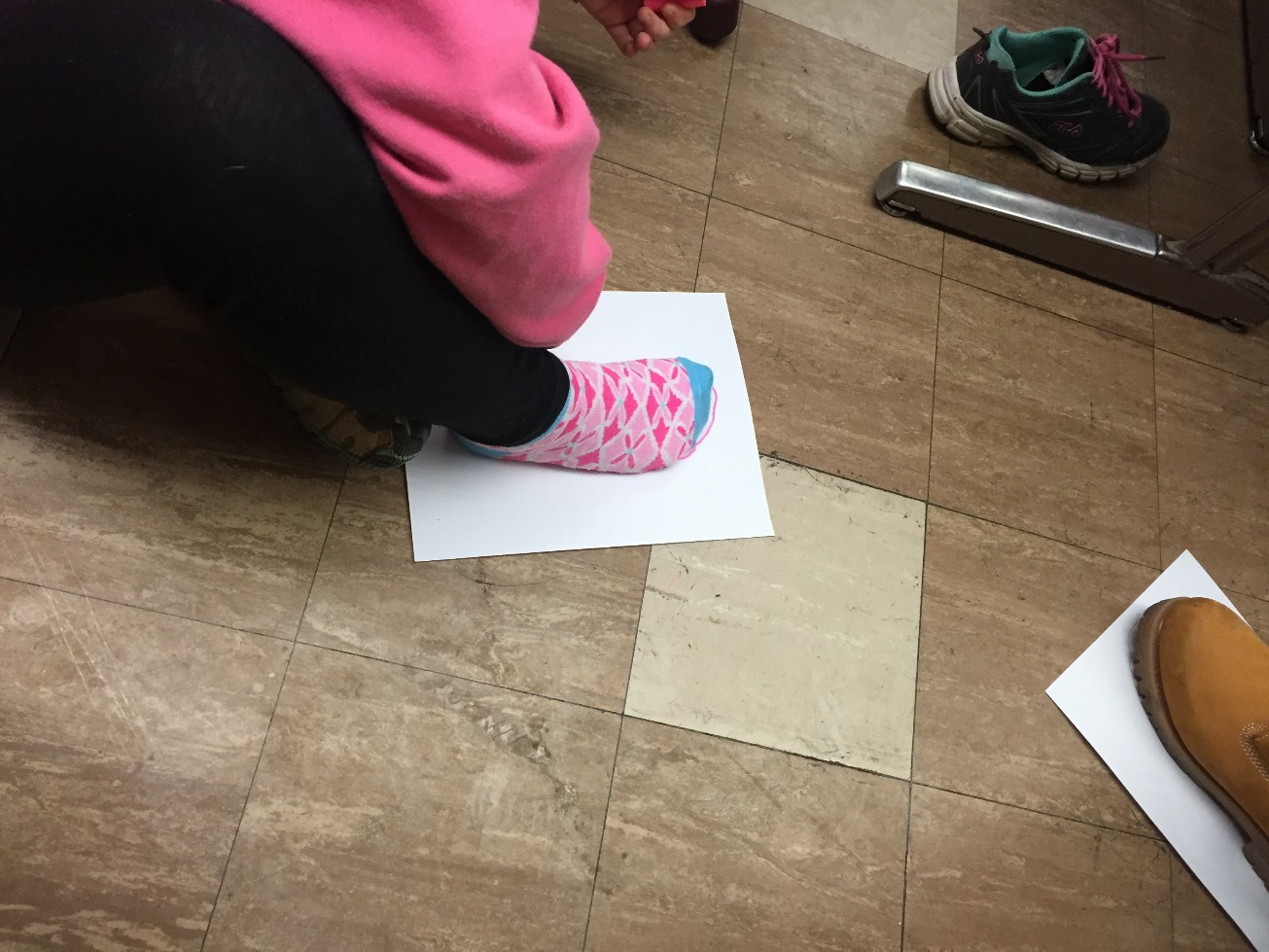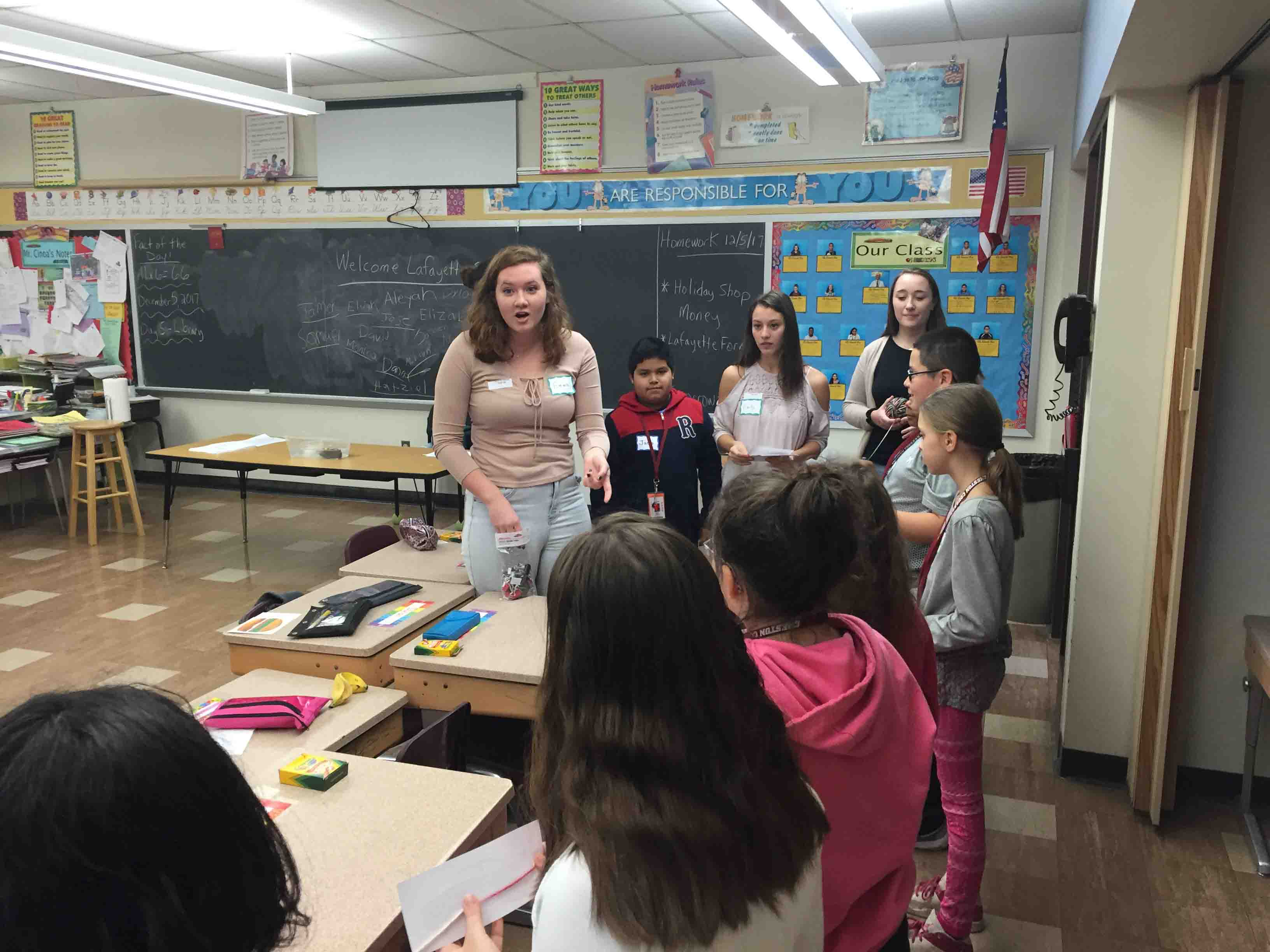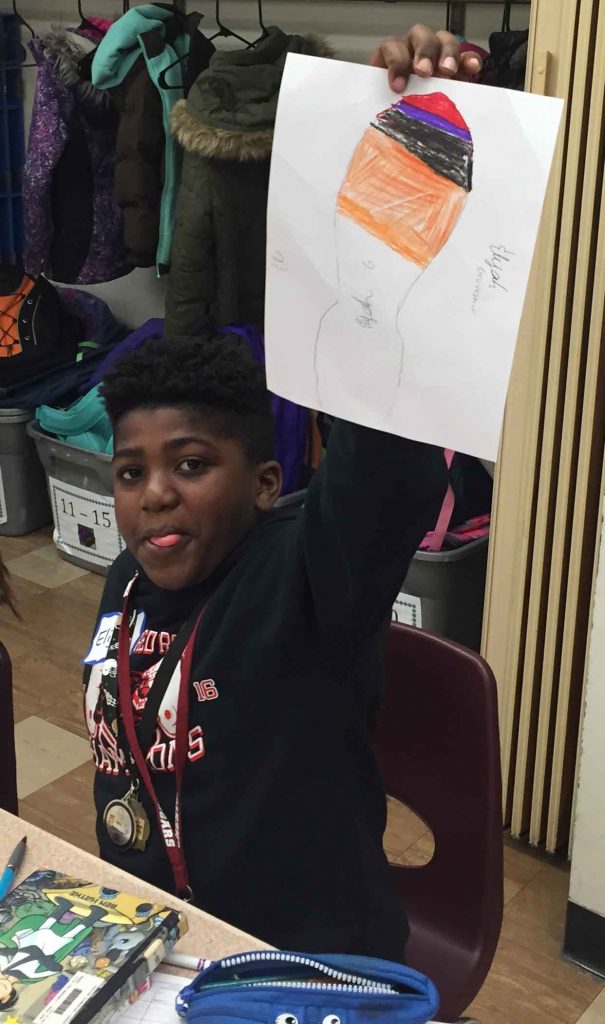By Bryan Hay
A class of fourth-graders at Cheston Elementary School silently gathers around a small tub as a chunk of ice slowly melts, inundating a tiny house perched atop a rock.
“When you burn off energy it creates carbon gas, which heats the atmosphere and causes icebergs to melt and sea levels to rise,” says Emma Leeds ’19, who’s double majoring in environmental science and Spanish.
One of the Cheston kids chimes in: “The water will spill over, and then there will be no more houses.”
In a moment, it is another lesson learned for the kids at Cheston and an opportunity for the Lafayette students to develop and apply their course material in an elementary school classroom, all part of the Center for Community Engagement’s pilot program at Cheston.

It focuses on enhancing educational outcomes of core curriculum by bringing Lafayette faculty, Cheston teachers, and both Lafayette and Cheston students together through cooperatively developed classroom-oriented learning modules. Lafayette students are challenged to deliver content-rich lessons learned in ongoing Lafayette classes to elementary school children in classroom settings–at both Lafayette College and Cheston Elementary School.
Cheston Elementary is one of two United Way Community Schools in Easton. The United Way of the Greater Lehigh Valley is focused on leveling the playing field for schools where students face more barriers to success. The schools become a hub of services that include one-site medical and dental, food banks, clothing closets, and housing resources. Services can help prevent issues that distract from learning. Each school has community and corporate partners. Together, the goal is to improve reading scores and prepare students for success in high school.
After the hands-on visual of melting ice, students in Andrea Armstrong’s environmental studies class lead the Cheston youngsters into a deeper look at how some of the most basic everyday activities can have an effect on climate change.
“What are some of your favorite foods?” asks Zoe Peerman ’20.

She is answered by a chorus of pizza, spaghetti, and the ever-popular hamburger.
“Oh” come the responses from around the classroom as the kids begin to unravel all the steps from pasture to grocery store that go onto a hamburger long before it ends up on a bun.
“It’s important to recognize all the steps; there’s a lot of pollution created just to make one burger,” says Leeds, pointing out the additional energy required to make a round-trip drive to the store and back and cook the meat. “Still want that burger?”
Climate change moves out of the kitchen to other aspects of life as the kids are asked to color their own carbon footprint based on their energy use—Do you turn the light off when a room is not used; do you leave the water running when you brush your teeth; do you use both sides of a piece of paper; do you leave the television on when you’re not watching it?

“You can help others reduce their carbon footprint by encouraging them to conserve energy,” says Peerman, an environmental studies and international affairs double major. “Try to make your carbon footprint a little smaller.”
Cheston’s Paul Cinoa, whose class benefited from the Lafayette visit, says the partnership between the school and the College continues to make a difference and provides an opportunity for his kids to learn directly from what’s going on in classrooms on College Hill.
 “Many of the Cheston kids have never been to Lafayette, so it’s just cool to see the students share what they’re learning with our kids here,” he says. “Climate change can affect all of us, and it’s an issue that’s not going away.”
“Many of the Cheston kids have never been to Lafayette, so it’s just cool to see the students share what they’re learning with our kids here,” he says. “Climate change can affect all of us, and it’s an issue that’s not going away.”
Cinoa also credits the Lafayette students for serving as solid role models. “My kids are 9 and 10 years old, and they’re observing students. I like to think that’s them in just 10 years,” he says.
Elijah, one of Cinoa’s students, was just finishing coloring his carbon footprint. He didn’t waste a second when asked what he had learned.
“We need to be aware of what we’re doing,” he says. “Turning off the lights will help save the world.”



 “Many of the Cheston kids have never been to Lafayette, so it’s just cool to see the students share what they’re learning with our kids here,” he says. “Climate change can affect all of us, and it’s an issue that’s not going away.”
“Many of the Cheston kids have never been to Lafayette, so it’s just cool to see the students share what they’re learning with our kids here,” he says. “Climate change can affect all of us, and it’s an issue that’s not going away.”